Trip Logs
Cruising the Greek Isles Trip Log: October 1–10, 2024
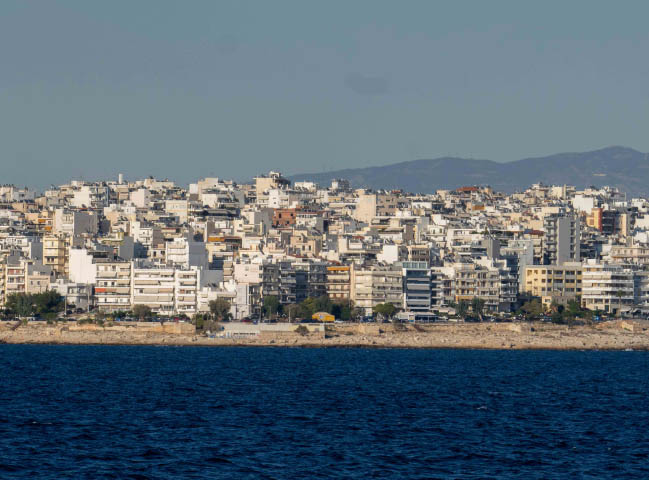
October 1, 2024 | Athens, Greece
Boarding elegant ‘Le Bougainville’ in Athens’ port, we met our fellow travellers at a welcome reception. Some had joined a pre-extension; others were continuing from the previous voyage; and a few of us were just arriving.
After our Expedition Leaders introduction, we met the Captain and crew, who warmly welcomed us aboard. We learned about the exciting tours planned for Crete the following day. We then faced a delightful dilemma —dining al fresco or indoors.
Ending on a low-key note, we took time to unpack and, perhaps, catch up on sleep in preparation for the adventure ahead.
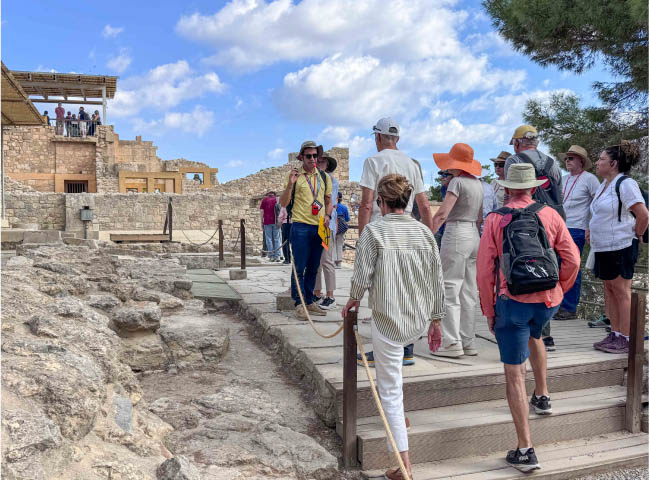
October 2, 2024 | Crete
We were thrilled to be the sole ship in Crete’s picturesque harbor on this sunny morning. After disembarking for our various excursions, ‘Le Bougainville’ relocated to the port town of Rethymnon. Early risers ventured into the capital, Heraklion, where Rocca a Mare Fortress guarded the harbor’s entrance. Venturing inside, we explored its tunnels, once filled with cannons. Stunning views of Heraklion rewarded us from the upper level, and we were surprised to learn it was the birthplace of Princess Alice, Prince Philip’s mother.
Continuing into the city center, we visited the Cathedral of Saint Titus and the iconic Lions Square. After some free time, we headed to the Historical Museum of Crete, which houses artifacts dating back to 500 BCE, including El Greco’s Baptism of Christ. A traditional Cretan lunch followed. Next, we drove to Rethymnon, a charming port town. We admired the Rimondi Fountain and the Augustinian Monastery of Our Lady, transformed from a mosque into a fine arts conservatory.
Seeking a rural experience, some of us headed into the countryside, winding through olive groves to reach a local farm. There, we were warmly greeted by the owners, who invited us into their home for a hands-on lesson in baking traditional bread and sarikopites, cheese-filled, fried pies.
We then met the farm animals, feeding cows, sheep and donkeys — and even milking a goat and samplings the results. To cap off our visit, we sat down to a homemade Greek lunch on their veranda and danced to lively Greek music. Before returning to the ship in Rethymnon, we made a quick stop at the captivating Heraklion Archaeological Museum, known for its exemplary collection of Minoan art.
Aspiring archaeologists among us instead reveled in the ancient wonders of Knossos. Arriving early, we had the site practically to ourselves. We explored the throne room and King Minos’ palace, including the labyrinth’s rumored source. Recently reopened areas revealed breathtaking frescoes of dolphins from the Queen’s chambers. After a refreshing juice break and time to browse the museum’s treasures, we indulged in a hearty Greek lunch at the seaside restaurant. We ended the day at the Heraklion Archaeological Museum, where we marveled at original frescoes, the enigmatic Phaistos Disc, the Malia Pendant and other iconic artifacts. We then enjoyed a leisurely stroll through the historic port.
Back aboard, our photography coach guided us on capturing the perfect vacation shots during a smartphone presentation. Later, we dressed up for our Captain’s festive welcome reception and dinner.
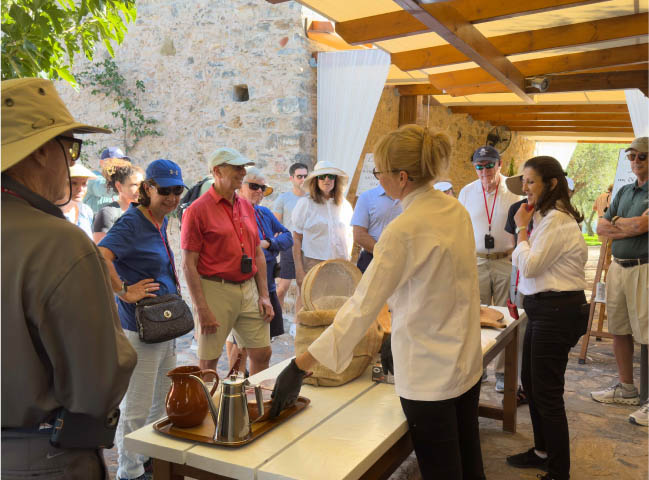
October 3, 2024 | Monemvasia
Monemvasia is a fortified town perched atop a massive rock that once formed a peninsula in the southeastern Peloponnese. An earthquake in 375 AD caused the land to sink, creating a small island. Often called the “Gibraltar of the East,” it is markedly similar to the Rock of Gibraltar.
Early risers disembarked from the ship’s tender and headed straight for Mystras, a UNESCO World Heritage Site and remarkably well-preserved late-Byzantine city. As we drove, we passed through vibrant orange and olive groves and the modern city of Sparta.
Our ascent began at the Church of Hagios Demetrios, the earliest surviving Mystras church. There, we admired the marble relief of the double-headed eagle, the symbol of the Paleologos dynasty. According to legend, this is where the last Byzantine emperor, Constantine XI Palaiologos, was crowned in 1449.
For the more energetic, a further climb led to the Pantanassa Monastery, the only one on the site still permanently inhabited. A welcoming nun offered us a sweet treat known as loukoumi. We were rewarded with breathtaking views of the valley and explored the church, admiring its many icons and frescoes. We then enjoyed lunch at a local restaurant before returning to the ship or exploring the town. A few of our fittest even hiked up the cliffs to the fort at the top.
Those who stayed to the coast explored the walled town of Monemvasia, nestled at the foot of the cliffs. Despite its recent restoration, much of the town’s character remains intact. Unlike the whitewashed towns of Santorini and Mykonos, Monemvasia’s natural stone architecture blends seamlessly into the landscape, offering protection from historical pirate attacks.
After soaking up its seaward views, sun-drenched courtyards adorned with bougainvillea, and mysterious alleys and stairwells, some returned to our vessel for downtime. Others continued to the summer home of poet Yiannis Ritsos. Located in Liotrivi, the estate once boasted an olive grove, mill and vineyards. Today, it also includes an apiary. We learned about the local bread-making process, discovered the estate’s olive oil brand, and had the opportunity to "adopt" a tree for up to three years. As part of this experience, we could participate in the harvest and receive a portion of the fruit. To conclude our visit, we enjoyed a delicious lunch featuring the estate’s wines, jams, honey and oils.
Back aboard, we attended a talk on the Aegean Bronze Age, followed by a Greek-themed cocktail hour in the lounge.
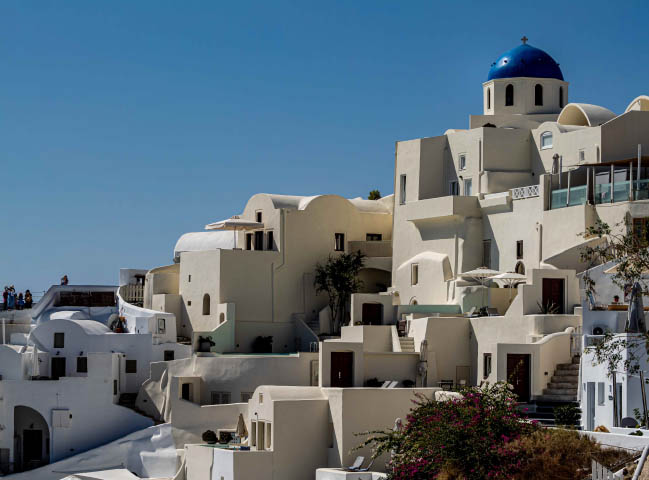
October 4, 2024 | Santorini
Steaming into the ring of islands and cliffs that form the caldera, there was no mistaking we reached Santorini.
Shortly after, we disembarked onto Nea Kameni, an uninhabited island born from volcanic fury. Alongside our guide, we hiked up the crater, enjoying spectacular scenery, including views of the caldera and the towns of Oia and Fira. Later, we visited thermal springs on the island of Palea Kameni, with time to swim in its sulfurous waters.
Our wine-loving group made their way to Athinios. From there, we ascended a winding road, marveling at the panoramic views. Our first stop was the Koutsogiannopoulos Wine Museum. Located within a natural, underground cave, it lent insight into the life of a Santorini winemaker. At a nearby vineyard, we witnessed a unique cultivation technique — the ancient vines were pruned and formed into wreaths to protect the fruit from the island’s strong winds. Then — at the oldest winery on the island — we sampled four wines alongside local delicacies. Some proceeded to the mystical village of Oia, known for its iconic blue domes.
Others explored the archaeological site of Akrotiri, a Bronze Age settlement buried during the 16th-century BCE eruption. Called the “Pompeii of the Aegean,” this extensive site reveals the remnants of daily life, including furniture, plumbing, storage areas and beautifully preserved frescoes. The eruption is believed to have contributed to the downfall of the Minoan civilization.
We then had the option of then visiting Fira, the island’s capital. Although it was severely damaged in the 1956 earthquake, the upper town has been rebuilt and expanded. Those who visited the clifftop town boarded a cable car. The restaurants and cafes offer views of the caldera and its surrounding islands. Meanwhile, the charming network of lanes is lined with shops, inviting visitors to explore and discover unique treasures. Others chose to visit the picturesque Oia, perched high above the sea. There, we enjoyed leisurely lunches, captured stunning photos of the iconic, blue-domed churches and explored the charming shops.
Back aboard Le Bougainville, our archaeologist gave a talk on beekeeping in the Mediterranean, from the past to the present. Later, we joined in a spirited trivia quiz in the main lounge. The competition was fierce, and the winners were rewarded with prizes. As the evening drew to a close, we retired to our cabins, looking forward to the adventures ahead.
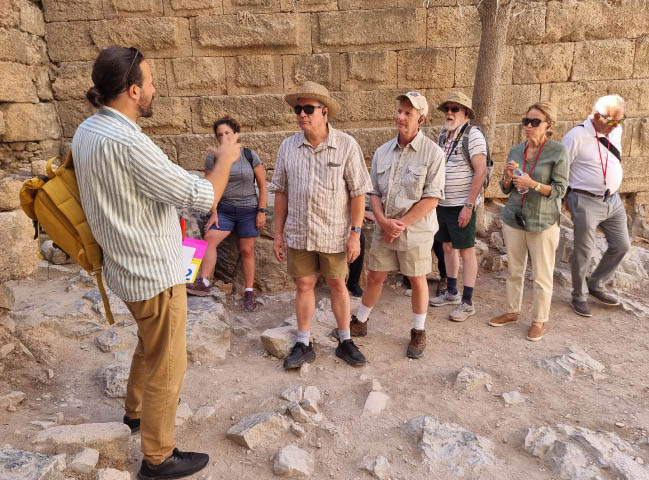
October 5, 2024 | Rhodes
Those going the farthest afield left first thing, driving through the scenic vineyards and citrus and olive groves en route to Lindos. We climbed steps to reach the Acropolis, where we enjoyed panoramic views of the island, the sea and Saint Paul’s Bay. We then visited the Temple of Athena Lindia with its double-winged portico.
Others embarked on a pottery-making adventure, a novel experience for many. As we learned about the rich history of pottery in the fourth-century Temple of Athena Lindia, we explored the workshop, admiring the diverse styles and glazes. We also had the chance to decorate our own plates. Our creations will be fired on site and sent to our homes.
A group of us chose a different route, following the coastline to the Acropolis of Rhodes, nestled on the slopes of Monte Smith. We marveled at the ancient stadium before entering the historic Old Town through the D’Amboise Gate. We paused to admire the Palace of the Grand Master of the Knights of Rhodes, then continued our journey down the Street of the Knights. Our day culminated in a hands-on culinary experience at a local restaurant. We prepared a delicious Greek salad, creamy tzatziki, savory eggplant dip, hearty moussaka, and succulent soutzoukakia. We then savored the fruits of our labor.
Following a similar start, several of us explored the medieval streets of the Old Town and saw the Palace of the Grand Master of the Knights of Rhodes, one of few examples of Gothic architecture in Greece. Our descent down the Street of the Knights led us to the "inns" of various nations, diplomatic outposts akin to modern-day consulates. As the French Inn was hosting a temporary exhibit, we had the opportunity to explore its interior. Our exploration continued into the vibrant Turkish and Jewish Quarters, where we visited the upper galleries of the Archaeological Museum of Rhodes, featuring an impressive collection of sculptures and statues. The museum’s largest room, once a bustling hospital, reflects the order’s historic role in providing medical care to pilgrims traveling to the Holy Land. At the end of this visit, some of us chose to stay in the museum to visit its garden area; others set off to explore the Hora; and the remainder sought a shady spot for coffee or lunch.
Later, we attended an onboard talk about Greece’s modern food culture and souvenirs. In the evening, we regrouped over cocktails and caviar, followed by live music courtesy of our ship’s singer.
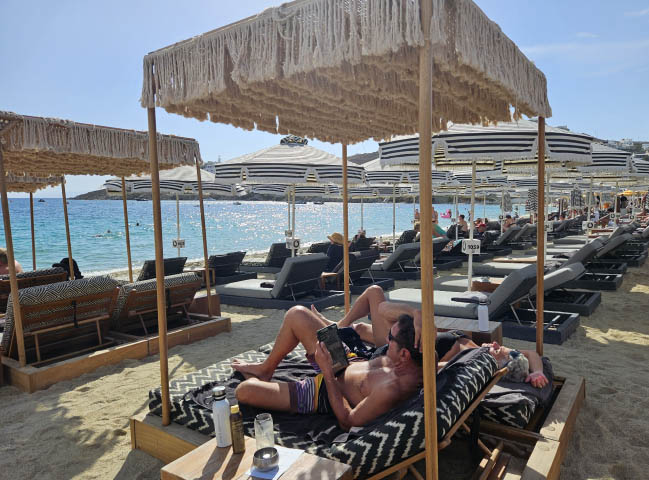
October 6, 2024 | Mykonos
We spent the day in Mykonos, a picturesque island known for its stunning landscapes, vibrant nightlife and rich history. Its charming, whitewashed buildings with blue-domed churches line narrow, winding streets.
Some of took a chartered boat to explore UNESCO-listed Delos, the birthplace of Apollo and Artemis. The island’s ruins encompass Doric temples, markets, an amphitheater, houses with mosaics and the iconic Terrace of the Lions statues. Beginning in a central agora, we worked our way through shops and merchants’ homes to the theatre quarter. We noted the intricate system of cisterns for collecting rainwater and observed sanctuaries and temples dedicated to foreign deities. Our journey continued through the House of Dionysos toward the imposing Temple of Apollo. We passed another smaller agora, along with the shrines to Propylaea and Artemis, before reaching the Terrace of the Lions. This iconic terrace features a row of weathered statues gazing out at the serene Sacred Lake. Ending the day, we stopped at the Archaeological Museum of Delos, which houses an extensive collection of statues unearthed in the surrounding area.
To gain a deeper understanding of Mykonos, others took on a leisurely morning stroll through the charming town. As we wandered along the waterfront, our knowledgeable guide shared stories about the local Greek Orthodox and Catholic churches and offered fascinating insights into the daily lives of the islanders. We then took a panoramic drive to the Monastery of Panayia Tourliani in Ano Mera, pausing for pictures and sampling ouzo alongside a Greek meze platter.
The rest of us walked around Mykonos Town, exploring its high-end boutiques, restaurants and bars that buzz with activity. We also observed the island’s windmills — dating to the 16th century — and Little Venice, with its colorful waterfront buildings.
After our adventures, we reconvened at the port. We had the option of returning to our ship, enjoying a relaxing afternoon at the beach, or continuing to explore the island.
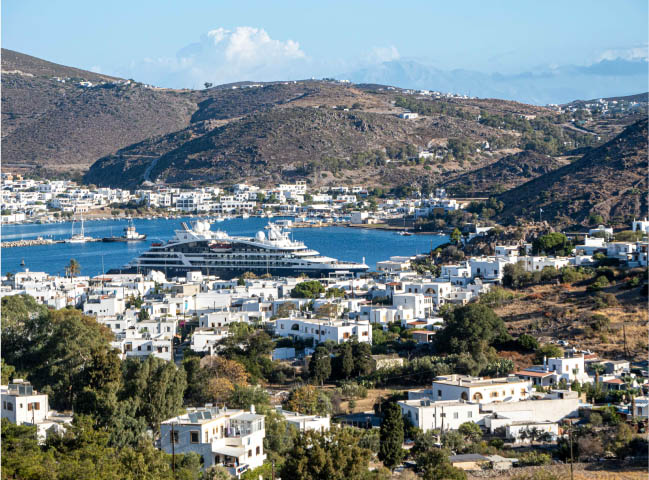
October 7, 2024 | Patmos
We arrived in Patmos. Its Cave of the Apocalypse is where John of Patmos (St. John the Theologian) is said to have written the Book of Revelations.
Some of us ascended the hill to the Monastery of Evangelismos — a nunnery — to admire the view. We learned about the daily lives of the 40 nuns who live there and entered the Greek Orthodox church to view its icons. We then had time to walk through the gardens and shop before returning to our ship.
Others followed a similar route, climbing the hill and stopping to photograph the Monastery of St. John towering above, several windmills nearby and Skala below. In Chora, we explored the Monastery of Saint John the Theologian, first gathering in the flowery courtyard. Entering the refectory, we learned about the dining habits of its inhabitants. Our exploration continued with a visit to the main church, followed by a tour of a side chapel adorned with numerous saintly relics. We then delved into the monastery’s history at the museum, which houses a massive brick bake oven and a captivating collection of liturgical silver and historical documents. We then took time to shop and visit the Cave of the Apocalypse. After a short drive in the country to admire the scenery and learn about island life from our guide, we enjoyed time a leisure.
Those seeking a more ethnographic experience went to Chora to visit the Simantiri mansion, inhabited for generations by the same family. We then visited the Zoodochos Pigi Monastery, founded by the monk Parthenios Pankosta. Continuing along the narrow streets, we took a guided tour of the Nikolaidis Mansion.
Our return to the ship offered a fascinating lecture on maritime archaeology in Greece, followed by a nostalgic slide show of our unforgettable journey. Dressed in our finest attire, we gathered for the Captain’s farewell reception and dinner this evening. It’s bittersweet to realize that this incredible adventure is drawing to a close.

October 8, 2024 | Athens
After bidding adieu to our floating home, we ventured into the bustling streets of Athens. A group of us made a beeline for the iconic Parthenon. Along the way, we took in the sights, including the historic harbor and one of the many Olympic stadiums. As we ascended the Acropolis, we paused at scenic viewpoints where we gained insight from our knowledgeable guide. Reaching the summit, we observed the ongoing restoration efforts on the Parthenon. In addition to cleaning and replacing damaged stones, corroded iron rods and staples are being replaced with more durable titanium.
With some free time to explore, we sought out the best vantage points for capturing photos. Descending to a local restaurant, we reunited with our friends before heading to the Acropolis Museum.
For those already familiar with the Parthenon, the Acropolis Museum was our first destination. We admired the original caryatids and watched a video about their restoration. The Archaic gallery showcases numerous statues that still retain traces of their original pigments. A remarkable LEGO replica of the Acropolis — constructed from over 100,000 pieces — is also on display. With time to explore on our own, we returned to different galleries, visited the bookstore or gift shop, and then reconvened for lunch. Afterward, we embarked on a driving tour of Athens, exploring significant landmarks such as the Benaki Museum, Museum of Cycladic Art or the National Museum of Contemporary Art Αthens, as well as the Athens National Garden, Hellenic Parliament and Tomb of the Unknown Soldier.
After gathering at our hotel to collect our keys and freshen up, we convened in the lobby for a farewell dinner party at a local winery. Upon arrival at the elegant venue, we were greeted by a procession of torch-bearing vestal virgins. On the terrace, we indulged in an array of mezes and cocktails while admiring the living “statues” of caryatids and Greek gods.
Below the terrace, on a lawn with a stone patio, we were entertained by traditional Greek dance between courses. Many of us couldn’t resist joining in the festivities for the final dance number before returning to Athens to prepare for tomorrow’s adventures.
October 9, 2024 | Athens
Our last full day in Greece was a whirlwind tour through the country’s rich history. We began with a photo stop at the Corinth Canal, which connects the Gulf of Corinth to the Saronic Gulf. Standing on the bridge, we marveled at the narrow passage.
We next made our way to the Ancient Theatre of Epidaurus, a remarkably well-preserved structure dating back to the 4th century BCE. The theater, renowned for its acoustics, is associated with the ruins of a hospital complex dedicated to the healing god Asclepius. Our guide demonstrated the theater’s remarkable sound quality by standing at the center of the stage and speaking softly. Her voice echoed throughout the amphitheater, a testament to its impressive design.
After a lunch of traditional Greek fare at the family-run restaurant and vineyard, we climbed to the Lion Gate at the Bronze Age citadel of Mycenae. This imposing megalithic structure served as both a military fortification and a palace. It also functioned as a funerary ground, as evidenced by the nearby Treasury of Atreus, a beehive tomb dating to 1300 BCE.
While some of our group ventured into the ancient past, others embraced the vibrant present of Greek food culture. We began with a walking tour to witness the Changing of the Guard at the Greek Parliament. Afterward, we indulged in a local treat of savory, flaky, freshly baked cheese bread. We then fueled up with rich Greek coffee, followed by a taste of ouzo and mastika, two Greek spirits. Our culinary adventure continued as we strolled through the historic Plaka neighborhood. This charming area is filled with narrow streets, quaint shops and traditional taverns. The day concluded with a hearty lunch of souvlaki.
For a less traditional exploration, others set out to explore Athens’ art scene. Our first stop was the Basil & Elise Goulandris Foundation, where our knowledgeable guide introduced us to a collection of renowned works of art. From the impressionist masterpieces of Monet and Cézanne to the iconic pieces of Picasso, we were captivated. After a coffee and cake break, we headed to a contemporary gallery exhibiting work by a promising Greek artist.
Continuing onward, we visited the Benaki Museum, exploring its extensive pottery collection, including a Cycladic female statue. The museum also showcased exquisite jewelry, textiles, icons, and traditional costumes and furniture from the 18th century. Among the highlights of our visit was Domenikos Theotokopoulos’ El Greco. To conclude our cultural exploration, we had lunch at the museum’s café.
Meanwhile, a few of us headed to the Athens Riviera, enjoying the scenic drive to a beach club en route. On arrival, private beds overlooking the pristine waters awaited.
After an engaging last day in Athens, we parted ways to enjoy our final evening and prepare for our onward travels.
 The Americas
The Americas Europe, Middle East and Africa
Europe, Middle East and Africa Australia, NZ and Asia
Australia, NZ and Asia























































































































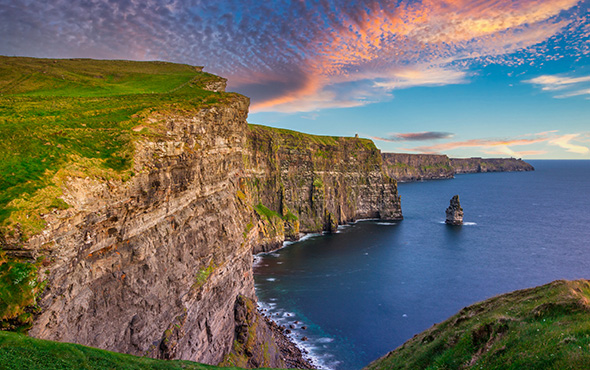




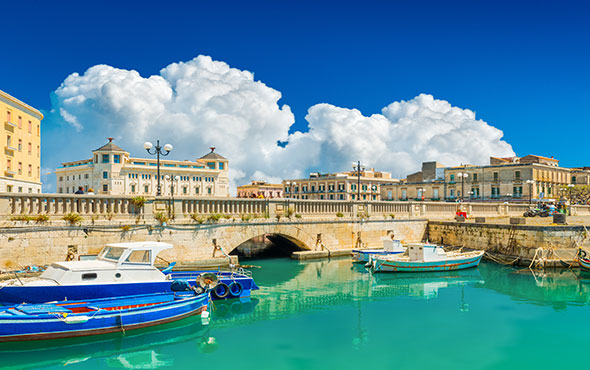



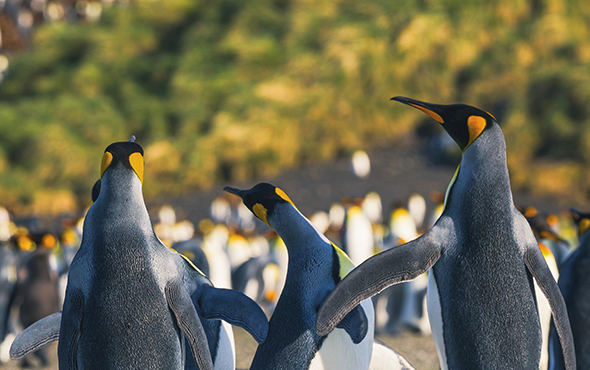
 The Americas
The Americas
 Europe, Middle East and Africa
Europe, Middle East and Africa Australia, NZ and Asia
Australia, NZ and Asia